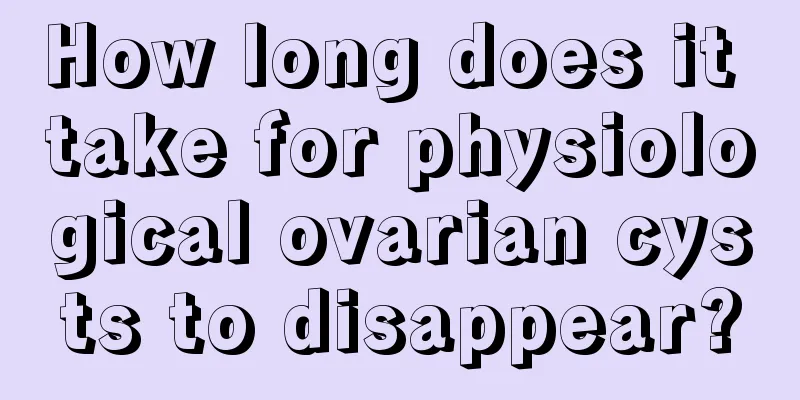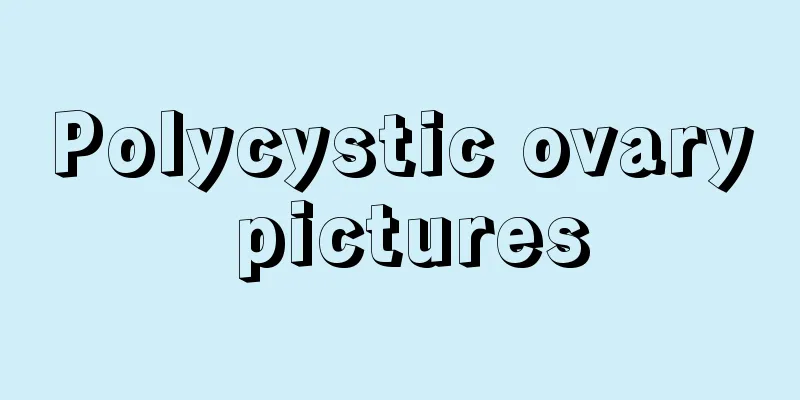How long does it take for physiological ovarian cysts to disappear?

|
If it is a physiological ovarian cyst, women do not need to worry too much at this time, as generally no treatment is required. Physiological ovarian cysts are generally lutein cysts, which will disappear on their own. Don't worry too much. Of course, you should do a good job of follow-up in the hospital. Generally, the diameter is less than five centimeters. Don't be too anxious. If it is a physiological cyst, it will disappear on its own. If ovarian cysts persist and increase in size, the possibility of an ovarian cystic tumor should be considered. Ovarian cystic tumors, which can be benign or malignant, cannot disappear on their own and should be treated surgically as soon as possible. What are the types of ovarian cysts? 1. Chocolate cyst (endometrioma): It refers to endometriosis growing in the ovaries, forming a large amount of sticky coffee-colored chocolate-like liquid in the ovaries. Because endometriomas grow larger over time, they gradually erode normal tissue and cause irreversible damage to ovarian tissue. After assessing its severity, surgery may be required, as this is one type of ovarian cyst. 2. Functional cysts: also known as physiological cysts, this type of cyst is quite common among women of reproductive age. An abnormal amount of fluid accumulates in the follicles or corpus luteum, forming a follicular cyst or corpus luteum cyst. This functional cyst can sometimes be quite large, but it usually disappears on its own within three months, regardless of medication or not. 3. Serous epithelial cysts and mucinous epithelial cysts: Cysts that still exist after three months of observation are likely to be epithelial ovarian cysts rather than functional cysts. This is because the serous cells and mucous cells with secretory functions are buried in the ovaries after ovulation and continuously secrete fluid to form cysts. This type of cyst will not go away and needs to be removed surgically. 4. Hemorrhagic cyst: One of the common gynecological diseases in young women, hemorrhagic ovarian cysts will recover in most cases, so you can observe it first, and it does not necessarily require medication or surgical treatment. However, sometimes hemorrhagic ovarian cysts will be combined with intra-abdominal bleeding, or even massive bleeding causing shock. At this time, emergency surgical treatment is necessary. This is also a common type of ovarian cyst. In addition to drug treatment for ovarian cysts, you should also pay attention to your daily diet and health care. Drug supplements plus diet therapy are more conducive to the treatment of the disease! |
>>: What are the symptoms of hydrosalpinx?
Recommend
Is it normal to have blood in the vaginal discharge after miscarriage?
When there is blood in the leucorrhea after child...
Over the years, which "antidotes" in movies and TV shows have fooled you?
This is the 4937th article of Da Yi Xiao Hu The m...
Can pregnant women soak their feet?
Foot soaking is a very good way to maintain healt...
What to do if a woman has vaginitis and vulvar itching
In fact, many white-collar women who need to sit ...
Women aged 30 are also prone to menopause. 10 health care methods to relieve discomfort
1. Reasonable adjustment of nutrition During meno...
What are the ingredients of mascara? What should I do if my mascara dries up?
Mascara is a must-have item for female friends to...
Is prolactin over 600 considered high?
Prolactin is a hormone secreted by the pituitary ...
A complete analysis of the methods and precautions for orthodontic treatment of children of different ages
1. Orthodontic methods for preschool children 1.1...
What should women pay attention to during their dangerous period?
The dangerous period for women is actually the ov...
How effective is milk papaya soup in breast enhancement?
We all know that papaya is a fruit that has a lot...
Extracorporeal shock wave lithotripsy is not a panacea—these patients must be selected carefully!
Author: Mao Yuanshen, attending physician of the ...
Turning off the lights and looking at your phone can be very harmful! Get rid of this habit now...
Expert of this article: Xu Qibin, associate chief...
Can women pluck their beards?
Girls also grow beards, which is a manifestation ...
Treatment of premature ovarian failure with placenta
In daily life, placenta is what we call it. It ca...









